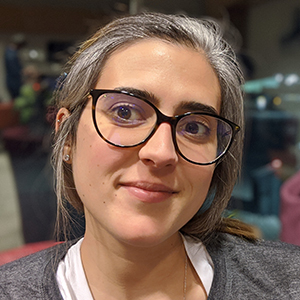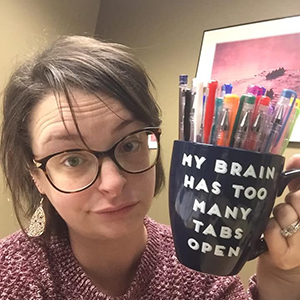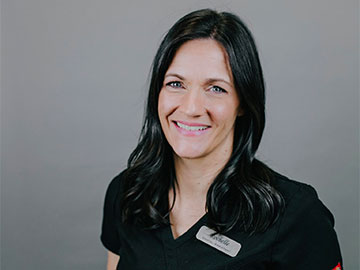

Written and reported by:
By Hana LaRock
Contributing Writer
Choosing to pursue higher education to start a career is a big decision—and so is choosing a school. To be prepared for the field you’re entering, you’ll want to be sure that your program has a curriculum that meets your state’s licensing and/or certification requirements. Otherwise, you could find that you’ve spent time and money for an education that won’t qualify you for a job in your state.
The federal Department of Education has stepped in to help. Under CFR 668.50, a regulation that went into effect in July 2020, schools must tell students whether a program will qualify them to work in the state where they live upon graduating. If you’re considering a career in an allied health field, this could benefit you, since many of these healthcare professions require a license and/or certification.
The Purpose of the Federal Regulation
Becky Goldberg Petty, the instructional designer at Hilbert College in Hamburg, New York, has been working in higher education for over a decade, including as a distance educator. She’s been at the helm of several online learning pilot initiatives associated with the regulation. She says the legislation was creative largely to prevent students from taking courses, only to find out later that they don’t meet their state’s licensure requirements.
“We see this happening with teaching licensure as well as health service providers,” Goldberg Petty says. “Certain states allow you to transfer credentials, and others don’t, and often folks don’t know about this until they try to transfer their certification and are left with a pile of paperwork, unforeseen expenses, waiting periods, and, at times, more schooling to go through to be able to practice in their career.”
Under the new regulation, schools are required to notify students of whether a program will qualify them to apply for the necessary license or certification in the state before they commit. Schools must meet this requirement or they won’t be able to disburse financial aid, which can hurt enrollment.
Regulation Applies to Many Allied Health Programs
The regulation covers both online and in-classroom programs and applies to allied health careers that require a license or certification. These examples show how requirements to practice can vary widely.
- Dental lab technician:
- A two-year dental lab technician program leading to an associate degree or certificate.
- Dietitian:
- Bachelor’s degree is required. License and/or certification required in most states.
- Ophthalmic technician:
- A one-year certificate or diploma for assistants and an associate degree for technologists. Certification required in some states.
- Occupational therapist:
- A master’s degree and license are required. Certification is optional.
- Pharmacy technician:
- A certificate, diploma or associate degree is required. You’ll also need certification.
- Phlebotomist:
- Phlebotomy training program. Certification required in some states.
The Difference Between a Certificate and Certification
Certificate
A document conferred at the end of a program, much like a diploma or a degree.
Certification
A credential earned after formal training that demonstrates your knowledge, expertise, and experience in a field or a specialty.
Help for Online Students
The growth in online learning has highlighted the need for students to understand whether a program will equip them for the career they are pursuing.
“Serious consumer protection concerns exist when a student is taking a distance education program leading to professional licensure or certification from an out-of-state institution,” according to an article by the Western Cooperative for Educational Technologies/State Authorization Network (WCET/SAN), a policy and advocacy group for digital learning in higher education. “The student must (and deserves to) be aware whether or not the program meets the professional licensure or certification requirements in the state where the graduate plans to practice the profession.”
This knowledge can also be crucial for students who start a program in one state but decide mid-program they want to work in another state.
“Distance education programs and correspondence courses enroll students from a multitude of states where they do not have a physical presence and their programs may not necessarily lead to licensure or certification, which would be important for students to know,” according to WCET/SAN.
Since the notification requirement is new, some schools may not have determined yet if their programs qualify students to work in all 50 states. Schools must let students know if this is the case—and keep them posted if at some point a program no longer meets a state’s requirements.
How Do Schools Notify Prospective Students?
With all the paperwork that comes with applying to schools, it can be hard to keep track of all the details when you enroll in a program. Here’s what to look for when checking whether a program will qualify you to meet licensing and certification requirements in your state.
Other Factors to Consider
Since licensing and certification requirements vary from state to state, students will need to track requirements if their career plans change.
“(Students) need to research. Extensively. And often,” says Goldberg Petty. “All of these regulations are fluid, and they change with the times.”
Some students will find that they want to enter a field that has national licensing or certification requirements that professionals in every state must meet. Many schools design their programs to meet national requirements.
And in some cases, states have agreements that allow professionals to work in several states without the need for different licenses or certifications.
Get Your Questions Answered
If you are a prospective student and you’re confused about this new regulation and what it means for you, your best bet is to contact a school directly. If you don’t see the information on a school’s website or in its brochure, all the more reason to talk to a program advisor.
There’s no substitute for getting crucial information directly from a school, but to learn more about a program:

With professional insight from:
Becky Goldberg Petty
Instructional Designer, Hilbert College
You may also enjoy:



